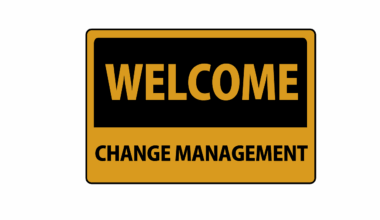Using Conflict Resolution to Foster Innovation and Creativity
Conflict resolution is an essential skill within organizations, particularly as teams strive for innovation and creativity. When different perspectives emerge, the potential for conflict increases, yet these conflicts can also foster innovative solutions when managed effectively. Approaching conflict through an analytical lens, where open communication is emphasized, creates a fertile ground for generating new ideas. Emphasizing the importance of collaboration, teams can leverage divergence of opinions as a source of strength rather than a point of contention. Through mindful facilitation, leaders can guide conversations towards productive outcomes. Empowering team members to express divergent thoughts without fear encourages an atmosphere of trust. When individuals feel safe, they are likely to contribute their best ideas. Resolving conflicts constructively involves acknowledging the feelings and perspectives of all team members without judgment. This approach not only addresses immediate issues but also builds a robust foundation for future interactions. Supporting conflict resolution through training can equip employees with the necessary tools to navigate challenges creatively. Overall, leveraging conflict resolution remains vital for any organization aiming to enhance its innovative capabilities and team dynamics.
Creating an environment that embraces conflict resolution begins with establishing clear communication channels. Regular team meetings should include forums for discussing potential conflicts, where team dynamics can be addressed openly. Encouraging team members to voice concerns allows for the surfacing of hidden issues that may stifle creativity. This proactive approach can be facilitated through structured formats such as brainstorming sessions or feedback loops. Most importantly, organizations should nurture a culture where constructive feedback is sought after and respected. This process transforms challenging encounters into valuable learning opportunities. Every disagreement provides insights into different viewpoints that can lead to groundbreaking ideas. Emphasizing collaborative problem-solving ensures that no single perspective dominates discussions, allowing for a blend of creativity. Engage team members through skills training in conflict resolution techniques, fostering deep-rooted skills that benefit the overall company’s culture. When employees possess tools to handle disagreements, they return to their individual tasks with renewed enthusiasm and motivation. Ultimately, a focus on conflict resolution transforms an organization’s approach to challenges and directly influences its innovation capability.
Benefits of Conflict Resolution in Boosting Creativity
Organizations that prioritize effective conflict resolution strategies often experience significant boosts in creativity and innovation. By transforming conflicts into opportunities, teams are encouraged to explore new ideas and unconventional approaches. Teams can brainstorm more effectively when varying opinions are communicated openly. Listening to unique perspectives and analyzing their validity enriches the overall idea pool. This crossover of thoughts and viewpoints often leads to surprising and creative outcomes. Furthermore, creative environments promote flexibility, enabling members to adapt quickly to changes and challenges. Constructive conflict provides teams with the emotional intelligence needed to empathize with their colleagues. As individuals learn to appreciate diverse perspectives, a richer tapestry of ideas is woven into the organizational culture. This interaction creates an inclusive environment where everyone feels valued. The resilience built through effective conflict management also enables teams to tackle difficult problems head-on when they arise. Ultimately, encouraging this approach ensures that all employees feel empowered, secure, and motivated. Businesses should celebrate successes attained during these processes to maintain morale and inspire ongoing creativity within the organizational environment.
One of the key strategies in fostering innovation through conflict resolution is establishing a clear framework for handling disagreements. This ensures that all team members know the defined processes for expressing concerns and seeking resolution. A commonly used technique involves designating a neutral mediator who can facilitate discussions without bias. A facilitator can guide the conversation, helping ensure that all voices are heard while promoting empathy among team members. Additionally, providing team-building exercises focused on conflict resolution can enhance skills and foster camaraderie. Such exercises encourage participants to engage in role-play scenarios where they can practice approaches to resolving disagreements constructively. By simulating conflict situations, teams can better prepare for real-life disputes. Emphasizing team coherence during problem-solving sessions also contributes to promoting cohesion. Companies that integrate conflict resolution periodically into their training programs will cultivate a workforce equipped to handle challenges effectively. Consequently, these practices align with broader organizational goals, such as maintaining competitive advantage through innovative approaches. Overall, a deep investment in conflict management skills leads to stronger organizational cultures, paving the way for enhanced creativity and forward-thinking methodologies.
Transforming Conflict into Collaborative Innovation
To optimize conflict resolution’s potential in promoting creativity, organizations should actively focus on transforming conflicts into collaborative innovation. One effective approach involves the use of brainstorming sessions specifically targeted towards resolving conflicts. By shifting the perspective from disagreement to collective problem-solving, teams can explore solutions together. No idea should be dismissed prematurely during these sessions; every contribution is valuable. This practice invites individuals to think freely and creatively. Furthermore, employing diverse techniques such as mind mapping or other visual tools can help crystallize the ideas generated in these discussions. Providing a platform for exploring conflict within a creative context encourages radical thinking and unexpected solutions. As participants collaborate in a problem-solving atmosphere, they cultivate a deeper understanding of differing views. Companies can promote collaboration by leveraging technology to facilitate virtual brainstorming sessions, ensuring inclusivity regardless of geographical boundaries. Encouraging diversity of thought through a blend of ideas will lead to richer solutions. Ultimately, recognizing the potential of conflict as a catalyst for collaboration will further instill a culture of innovation throughout the organization.
Incentivizing collaboration while addressing conflicts can significantly enhance workplace innovation. Organizations could establish recognition programs for team members whose collaborative efforts successfully lead to creative breakthroughs. Acknowledging the positive outcomes of conflict resolution encourages an atmosphere where individuals feel motivated to tackle difficult conversations proactively. In this regard, it is vital to promote a growth mindset among employees. By focusing on continuous improvement, teams can view conflicts as opportunities to grow rather than obstacles to performance. Such practices will ensure teams remain agile and adaptable in the fast-paced business environment. Equally important is conducting regular reviews of conflict resolution strategies to identify areas for enhancement. Engaging employees to provide feedback on processes encourages involvement and ownership of the organizational culture. This proactive approach cultivates a sense of belonging and commitment among employees. Ultimately, these practices build strong networks and solidarity among team members, further enhancing their collaborative spirit. Tracking progress with defined metrics related to innovation outcomes will also provide valuable insights into the effectiveness of conflict resolution initiatives. In conclusion, prioritizing collaborative conflict resolution yields long-lasting benefits for the organization.
Conclusion: Embracing Conflict as a Pathway to Growth
In conclusion, embracing conflict resolution as a vital element of business management facilitates meaningful engagement among team members. By fostering an environment where conflicts are approached with a constructive mindset, organizations can effectively fuel innovation and creativity. This process invites all employees to take part in building solutions that lead to organizational growth. As employees feel validated and heard, a culture of teamwork flourishes, ensuring individuals feel truly empowered. Companies investing in conflict resolution training will see the long-term benefits of improved teamwork and enhanced creativity as direct outcomes. Moving forward, integrating these conflict resolution practices into daily operations will position organizations to adapt rapidly to market changes. They will remain influences of innovation in their industries, fostering an engaged workforce ready to tackle challenges. Lastly, organizations must celebrate and share success stories related to conflict resolution initiatives. This recognition not only strengthens morale but exemplifies the inherent value of conflict as a driver for creativity and problem-solving. By implementing these principles, organizations can flourish in their quest for sustained growth while generating consistently innovative solutions.
This is another paragraph with exactly 190 words…


